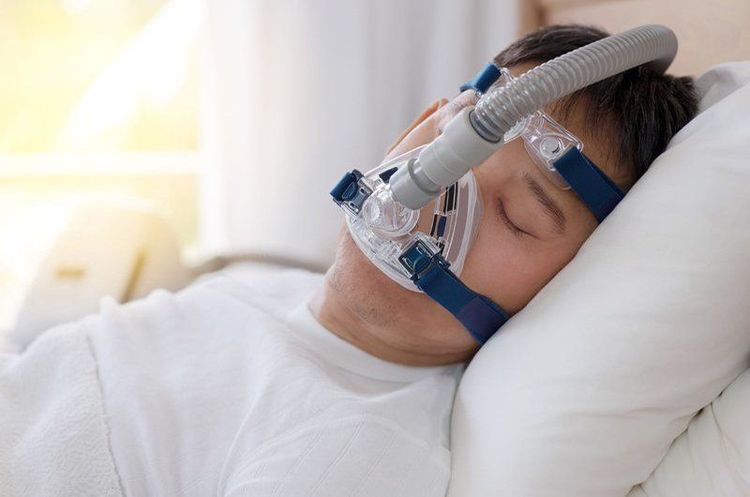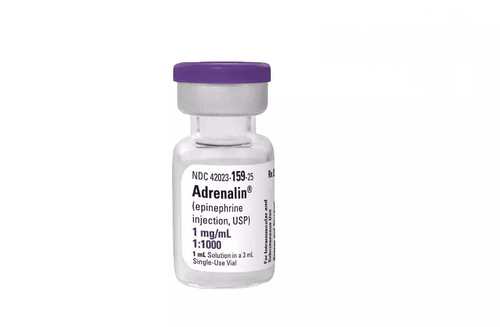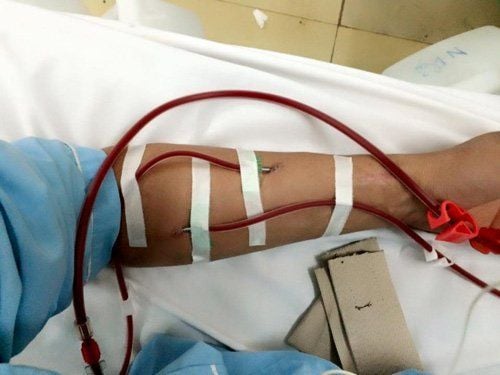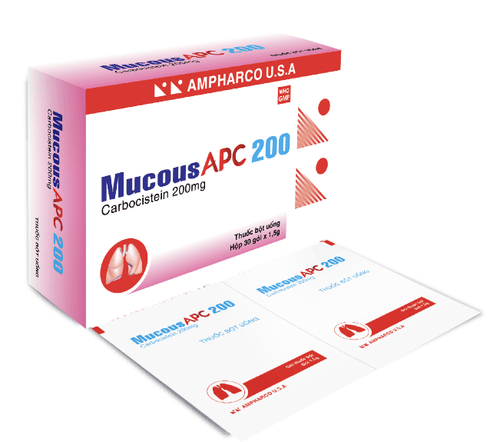This is an automatically translated article.
The article is professionally consulted by Master, Doctor Tong Van Hoan - Emergency Medicine Doctor - Emergency Department - Vinmec Danang International Hospital. Doctor with 10 years of experience in the field of Emergency Resuscitation.1. What is artificial ventilation?
Artificial ventilation is also known as positive pressure ventilation. This is a method of mechanical ventilation, using a machine to push into the lungs to increase central airway pressure. The increased pressure in the central airways helps push air into the alveoli, causing the lungs to expand. As the lungs expand, the machine stops pumping air into the airways. At this point, the pressure in the central airway decreases. During expiration, the pressure in the central airways falls below the pressure in the alveoli.Artificial ventilation can partially or completely replace the patient's spontaneous breathing. Artificial ventilation is indicated when the patient has acute or chronic respiratory failure, i.e. the patient has hypoxia, hypoventilation, or both. Indications for artificial ventilation include:
Acute lung injury; Pneumonia due to bacterial infection, aspiration or reflux; Cardiac pulmonary edema; Acute respiratory distress syndrome; Acute myocardial infarction ; Cardiomyopathy ; Respiratory muscle paralysis; exacerbation of chronic obstructive pulmonary disease ; Malignant asthma attacks; Chest wall disease; Systemic disease; Drug overdose.

Physiological goals: Support pulmonary gas exchange by changing alveolar ventilation and arterial blood oxygenation; Reducing lung damage caused by ventilators; Reducing metabolic burden by releasing respiratory muscles; Clinical objectives: Resolve acute respiratory acidosis; Solve the condition of reducing blood oxygenation; Good treatment of respiratory failure; Prevention and treatment of atelectasis; Solve the problem of respiratory muscle fatigue; Fixed chest wall; Reduces oxygen consumption of organs or myocardium. Artificial ventilation is classified according to the mechanism of termination of inspiration. There are four types: volume-limited, flow-limited, pressure-limited, or time-limited ventilation. There are two types of artificial ventilation as non-invasive ventilation and invasive artificial ventilation.
2. What is invasive artificial ventilation?
2.1 Invasive and non-invasive artificial ventilation Artificial ventilation can be invasive or non-invasive. Invasive ventilation, also known as traditional artificial ventilation, is performed through an endotracheal tube or through a tracheostomy cannula. Meanwhile, positive pressure non-invasive artificial ventilation is a ventilation technique performed through a mask.The decision of artificial ventilation by invasive or non-invasive form depends on the clinical situation of each patient: Diagnosis, severity, rate of progression, associated lesions,... Possible Administer noninvasive ventilation before invasive ventilation, especially in patients with acute respiratory failure with hypercapnia (chronic obstructive pulmonary disease) or hemodynamic acute pulmonary edema if the patient is not severe respiratory failure.

Maintain breathing in patients with respiratory failure; Support breathing when the patient has airway obstruction; Protect the airway if the patient is comatose or has lost airway reflexes; Control the airway when performing surgery requiring endotracheal anesthesia. Indications for endotracheal intubation:
Open or protect the airway: When it is necessary to aspirate sputum, secretions or acute airway obstruction (due to laryngospasm, foreign body, ...), loss of reflexes radiation to protect the respiratory tract (due to head trauma, circulatory arrest); Invasive artificial ventilation: Anesthetize the patient's airways, support people with respiratory failure, hypoxemia due to pneumonia, pulmonary edema and increased CO2 due to bronchial asthma, chronic obstructive pulmonary disease. Contraindications:
Oral: People with joint stiffness, nasopharyngeal tumor, jaw dislocation, trauma, jaw bone fracture or oropharyngeal surgery; Nasal route: People with trauma, deformity of the nose - maxillofacial, thrombocytopenia, blood clotting disorders, sinusitis, hypertrophy of the nasal pedicle,... Tracheostomy. through a small incision in the front of the neck to aid in breathing. It is a form of long-term airway control for patients with reduced air flow to the lungs due to trauma, obstruction in the trachea, or conditions that affect lung function or oxygenation. Tracheostomy is necessary for the following:
Severe pneumonia; Tracheal damage due to trauma, obstruction, or radiation therapy; Local heart attack; Serious stroke. Tracheostomy is performed in an emergency situation when the patient cannot breathe. To perform the procedure, your doctor will make a small cut in the windpipe at the front of your neck, then insert a catheter into the hole and secure it with sutures or surgical tape. The tracheostomy procedure usually takes about 20-45 minutes.
Invasive artificial ventilation is a good supportive method for patients in cases of severe respiratory failure. However, this method also has many potential risks affecting the health of the patient. Therefore, patients and their loved ones need to absolutely follow the doctor's instructions throughout the course of respiratory support treatment.
Please dial HOTLINE for more information or register for an appointment HERE. Download MyVinmec app to make appointments faster and to manage your bookings easily.
SEE MORE
2 commonly used methods of artificial ventilation Artificial ventilation (ventilator): What you need to know Surfactant pump for neonatal respiratory failure: Things to keep in mind














